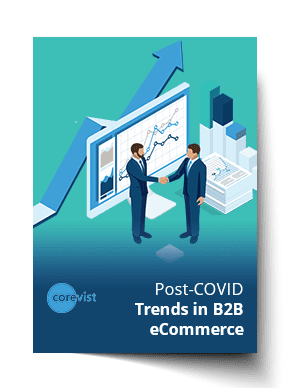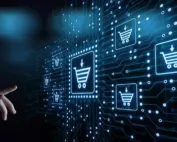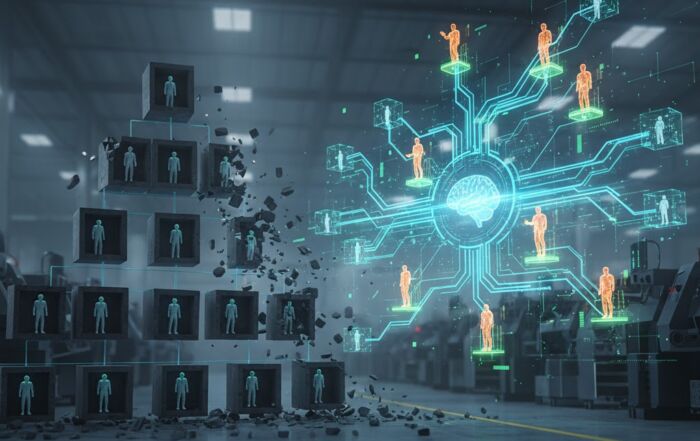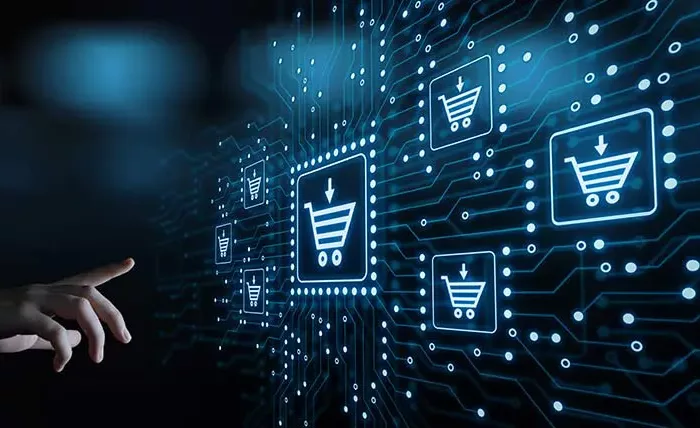Share
Author
George Anderson
Share
Growing B2B eCommerce traffic can be hard. This is especially true for manufacturers who only allow approved customers to log in to the B2B eCommerce portal—or organizations that sell in a limited market.
But what if you could get more orders from the B2B eCommerce traffic that’s already hitting your site?
This is the goal of increasing B2B eCommerce conversions. And it’s totally doable.
If you only allow approved customers to log in, then you’re already getting the right audience. The key is to benchmark your current conversion rate, identify barriers to conversion, and deal with those barriers.
Let’s dive in!
What’s a good B2B eCommerce conversion rate?
The answer depends on who you ask.
Here’s what a few experts say.
- 10% average conversion rate (B2X Partners)
- 6-9% average conversion rate (Cloudfy)
Let’s compare that to a subset of top-performing Corevist clients. Each of these companies displays live SAP data in their Corevist solution for inventory availability, scaled pricing, ATP, RDD, and much more, which gives customers the confidence to complete purchases (and thus contributes to a higher B2B eCommerce conversion rate).
Here are their lifetime conversion rates on the Corevist Platform:
- 72.26% (major consumer packaged goods manufacturer)
- 60.97% (medical supplies manufacturer)
- 54.51% (major pharmaceuticals manufacturer)
- 39.69% (art supplies manufacturer)
- 35.53% (medical supplies manufacturer)
- 31.96% (aftermarket parts manufacturer)
- 31.44% (aftermarket parts manufacturer)
Obviously, many factors influence these B2B eCommerce conversion rates. Different industries, different histories, different market pressures—the list is endless.
NEW Research:
B2B eCommerce Trends Emerging Post-COVID
Here’s where B2B eCommerce is going in 2021 and beyond: widespread shift to digital, Agile preferred, and more. Read now.
However, each one of these organizations significantly outperforms the typical conversion rate in B2B eCommerce (6-10%). When customers come to these B2B eCommerce websites, by and large, they’re completing purchases.
So what are these organizations getting right that others get wrong?
Let’s dig into that by reframing the question.
Why do B2B eCommerce transactions move offline?
Every industry is different, and every purchasing process is different. Sometimes, what started out as a B2B eCommerce purchase will move offline.
Maybe that’s fine, as long as you still close the sale. But offline transactions are more expensive for the vendor than hands-free B2B eCommerce sales.
More importantly, you should consider the implications of offline conversion. If a customer started the ordering process online, why didn’t they finish it? If you’ve launched B2B eCommerce to improve your customer experience (i.e. become easier to do business with), then something’s wrong if your customers still have to call in to finalize their orders.
In other words, you’ve got barriers to conversion in your B2B eCommerce experience.
Barriers to conversion in B2B eCommerce
To identify barriers to conversion, it helps to put yourself in your customers’ shoes. When you come to the B2B eCommerce website, what are your goals besides simply making a purchase?
In our experience, manufacturers’ customers often approach B2B eCommerce with these goals.
- Make sure this doesn’t take too long—I have a super busy day.
- Make sure I buy the right product the first time.
- Make sure the product is actually in inventory, right now, so I know I’ll get it.
- Make sure the ATP (personalized inventory availability) I’m offered is 1) accurate, and 2) sufficient for my needs.
- Make sure the order will get to its destination before my hard deadline.
- Make sure I get the right scaled price from my contract for the quantity I have to buy.
- Make sure I can bill the right subsidiary or division for the purchase.
- Make sure I can choose the right delivery location for the purchase.
- Make sure I can choose the best warehouse to source the purchase for faster or cheaper shipping (if applicable).
- Make sure my credit balance allows me to buy on credit right now.
That’s a lot of goals—and a lot that can go wrong if your customer experience isn’t up to snuff. In fact, every time the customer can’t achieve one of these goals, you’ve thrown up a greater barrier against B2B eCommerce conversion. (Hint: Some of the top B2B eCommerce platforms don’t do much to help with these barriers.)
Removing the barriers (real-time SAP integration is the key)
Why are Corevist clients seeing such high conversion rates? Across their varied industries and GTM (go-to-market) strategies, Corevist clients have one thing in common: their Corevist solutions reflect SAP data and logic in real time.
This is how they tear down barriers to conversion in B2B eCommerce.
Real-time SAP data and logic gives your buyers everything they need to meet the concerns we outlined above.
- Accurate, real-time information removes uncertainty and speeds up the buying process.
- Accurate, real-time information ensures the customer buys the right product the first time.
- Real-time inventory data helps the customer buy with confidence.
- Real-time ATP data helps the customer buy with confidence.
- Real-time RDD ensures the product will get to its destination before a hard deadline.
- Real-time pricing data ensures the customer gets the the scaled price from their contract for the quantity in the cart.
- Mapping of eCommerce users to SAP sold-tos ensures the customer can bill the right subsidiary or division for the purchase.
- Mapping of eCommerce users to SAP sold-tos ensures the customer can choose the right delivery location for the purchase.
- Warehouse mapping ensures the customer can choose the best warehouse to source the purchase for faster or cheaper shipping (if applicable).
- Real-time credit standing ensures customers don’t exceed their credit limit in self-service eCommerce.
NEW Research:
B2B eCommerce Trends Emerging Post-COVID
Here’s where B2B eCommerce is going in 2021 and beyond: widespread shift to digital, Agile preferred, and more. Read now.










